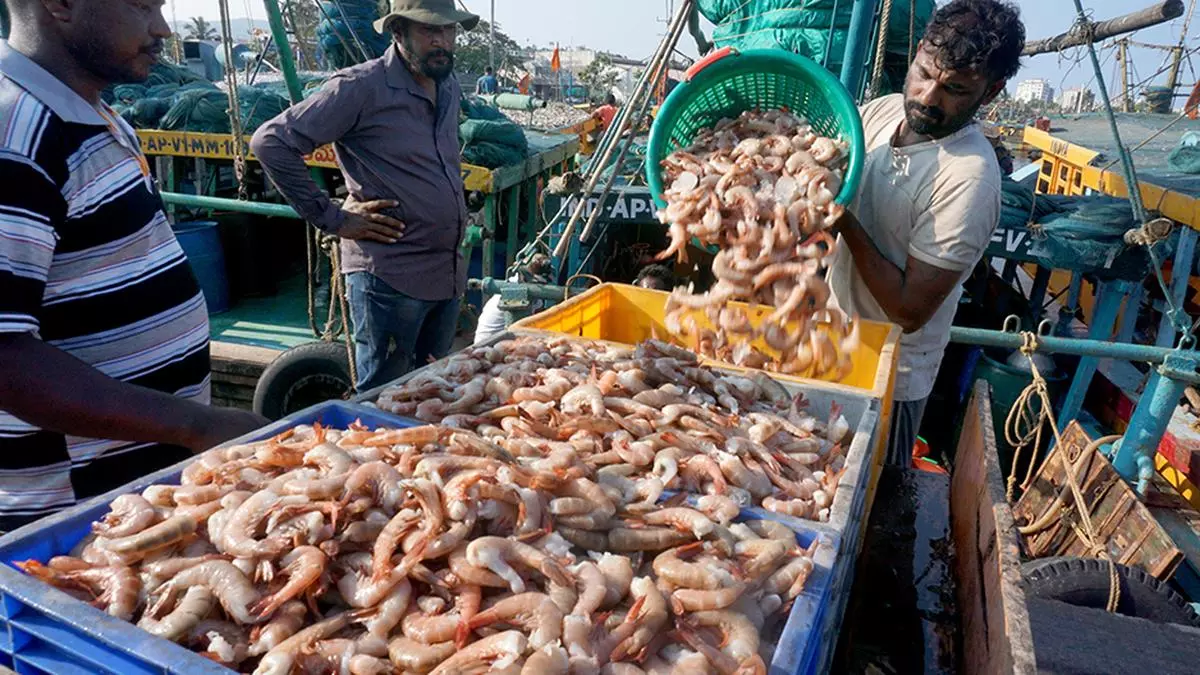CRISIL sees revenues of Indian shrimp exporters rising 8% this fiscal on improved demand
Indian shrimp exporters will see their revenues grow by 8-10 per cent this fiscal year as demand from key importing nations recovers and realisations improve, CRISIL Ratings said in a statement. The revenue growth will be despite the higher duties for Indian exporters in the United States and locational advantages enjoyed by key competing nations, it said.
Higher revenues and lower procurement costs will help Indian shrimp exporters sustain an operating margin of around 7 per cent this fiscal, despite supply chain disruptions and higher logistics costs because of geopolitical uncertainties.
Credit profiles will remain healthy as debt remains in check because of improved cash accrual, prudent working capital management, and limited capital expenditure (capex) due to surplus capacities. An analysis of 69 shrimp exporters rated by CRISIL Ratings, accounting for almost two-thirds of the industry’s revenues, indicates as much, it said.
Also read: All-women FPO of Odisha exports Amrapalli mangoes to London
Himank Sharma, Director, CRISIL Ratings, said “Indian shrimp exporters stand to benefit as demand improves for two reasons. First, lower channel inventories at importers’ end, who had reduced purchases in the past few months, will need to be replenished. Second, higher spending on discretionary and food items, as the economic outlook improves for Western economies (the key consumers), will drive up volume and realisations for exporters. Volume and realisations of Indian shrimp exporters will go up in tandem by 4-5 per cent each, driving the revenue growth.”
Market insights
India, Ecuador, and Vietnam account for around two-thirds of global shrimp exports, while the US, China, and Japan consume more than half of the global produce. In the past two fiscals, Ecuador surpassed India to become the largest shrimp exporter, backed by higher acreage, a favourable climate, and significant investments to improve the genetic quality of brood stock. Ecuador also benefited from its proximity to the US and the European Union as Asian exporters grappled with higher logistics costs amid container shortages.
CRISIL said the recent investigations by the US Department of Commerce (USDOC) with regards to countervailing duty (CVD) and anti-dumping duty (ADD) on shrimp exporting nations could have a bearing on their competitiveness. Albeit, the final determination of CVD for Indian exporters and the key competing nations, along with the outcome of ADD investigations by the USDOC on Ecuador and Indonesia, will be monitorable.
Margin Stability
A higher ADD for the competing countries could be a shot in the arm for Indian exporters. Procurement costs for Indian shrimp players will reduce this fiscal because of better production compared to last fiscal, when the summer crop took a hit due to a sudden rise in temperatures early in the season. Thus, higher revenues and lower procurement costs this fiscal year will keep operating margins stable at around 7 per cent, despite increased logistics costs due to geopolitical tensions. The working capital requirement will moderate as purchase costs reduce. To add to that, surplus processing capacities available with Indian exporters will limit capex, which will reduce dependence on external borrowings, CRISIL said.
Nagarjun Alaparthi, Associate Director, CRSIL Ratings, said, “Strong cash flows kept the balance sheets of shrimp exporters comfortable in the past decade. As debt addition remains muted this fiscal, and cash generation will improve due to better revenues and a stable operating margin, gearing and interest coverage will improve. Credit profiles, thus, will strengthen over the medium term.”
